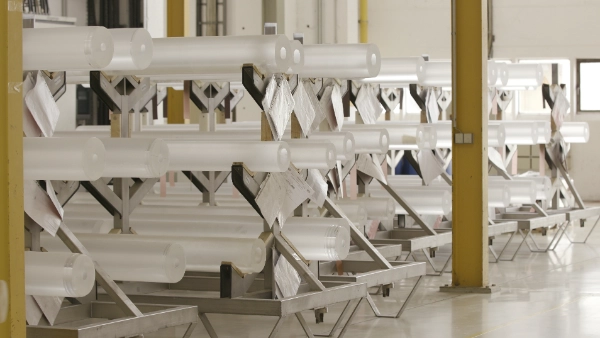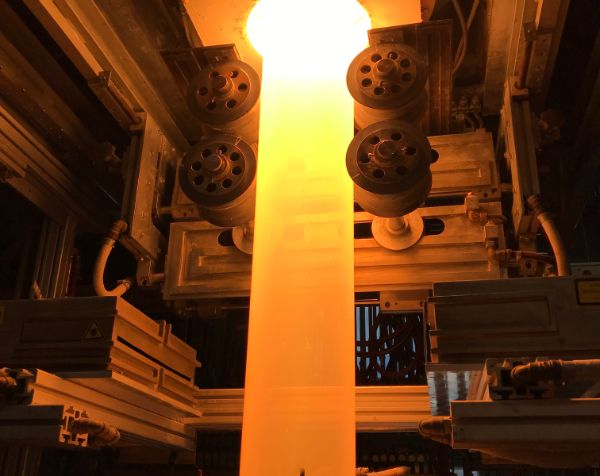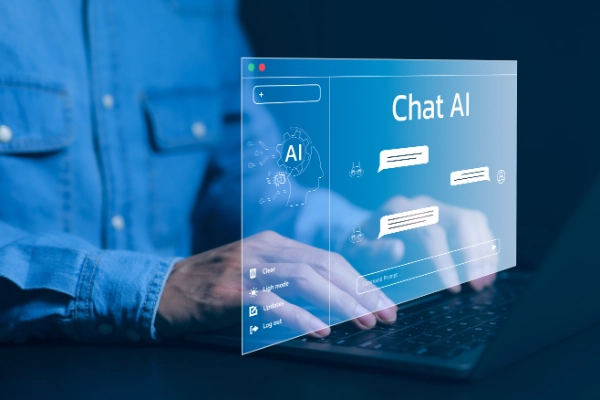AI guarantees highest quartz glass quality
In its natural or synthetic form, quartz glass is one of the most extraordinary materials used in industry and research. It enables numerous high-tech applications in IT, communications, medicine and the environment. Its high chemical purity is one of the key factors. Heraeus Conamic and Heraeus Comvance are two of the few companies in the world that produce this material and have recently begun using artificial intelligence to deliver on the promise of purity through defect detection at the highest level.

The AI systems were developed by specialists from the Digital Hub, the company's digitization unit, in close cooperation and intensive exchange with process engineering experts from Heraeus Comvance and Heraeus Conamic. A special task, because Heraeus Comvance is the world's largest manufacturer of synthetic quartz glass for telecommunications, i.e. fiber optic cables. And Heraeus Conamic is one of the international technology leaders for natural and synthetic quartz glass, with customized solutions for the semiconductor industry, among others. The complexity of the task is demonstrated by the fact that external companies have not been able to find a practical solution. Thanks to the Digital Hub's in-house development, however, both operating companies will be able to test automated quality control with AI for one production line and one quartz glass product each in the second half of 2023. It will initially be used to detect the most common defects in the quartz glass cylinders produced, namely larger bubbles and cracks. Until now, this has been done by conventional image recognition or simply by the human eye. The systems will have to prove themselves in early 2024 and then gradually replace the existing quality control system.
30,000 images in 15 minutes
The technology used is based on three components: 1. an imaging system in the form of cameras directly on the workpiece. 2. the AI system, which uses its trained expertise to evaluate the captured images, and 3. the feedback of the results to the machine and a visualization for the workers at the machine.
At Heraeus Comvance, glass cylinders several meters long are inspected for defects. The new automated system uses a camera system on a special camera carriage that continuously moves past the rotating quartz glass cylinder. Defects are detected by a specially developed AI component that automatically and reliably detects bubbles and cracks. To process the large number of images, the AI model runs on a special industrial PC with a graphics card. "We really need performance here, because with 10,000 to 15,000 images that have to be processed in 15 minutes each, speed counts," emphasizes Christian Piazzi, Program Manager AI at the Heraeus Digital Hub.
"At Heraeus Conamic, on the other hand, installation in our internal cloud is sufficient," he explains. As part of the project, an AI measurement system with four cameras is being used to check the cylinders produced for bubbles. These bubbles were previously detected by the naked eye, as they are very easy to see due to the lighting conditions. However, in order to decide whether a piece of glass is good or faulty, the size of the bubbles, which are only a few millimetres in size, must be correctly estimated and their number counted over a distance of up to 3.5 meters. This requires a great deal of experience, and accuracy is literally in the eye of the beholder. In the future, a suitable AI model will independently identify the different types of bubbles, reliably measure them and compare them with the agreement made with the customer in order to achieve an optimal application.

Intensive pre-training
To ensure reliable defect detection, the AI was trained on more than 100,000 images at Heraeus Comvance and more than 600 images at Conamic. To train the AI, the experts at Heraeus analysed the previous error catalogue in production and identified the most frequently occurring problems. In order for the AI to recognize them quickly, they used the Pareto principle, also known as the 80-20 rule. It states that 80 percent of the desired results can be achieved with 20 percent of the total effort. Identifying the remaining 20 percent of glass defects that occur much less frequently, such as inclusions, requires significantly more training, which accounts for 80 percent of the effort. This will therefore be pursued in the further development of AI within an economically viable framework.
But AI can do much more. For example, scheduling the usage of kilns used for making quartz glass much more efficiently. But that's another story, and the subject of the next episode in this series on AI and Heraeus.

